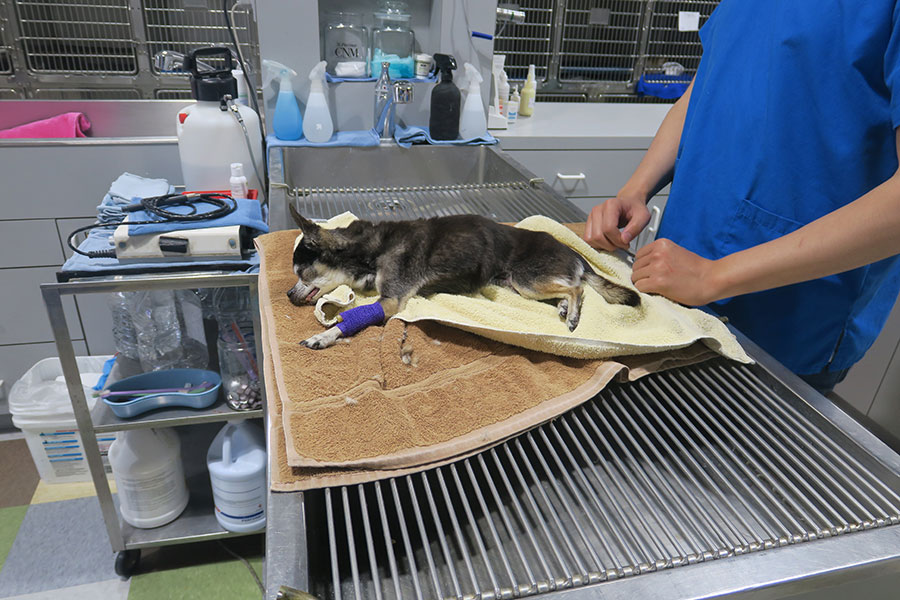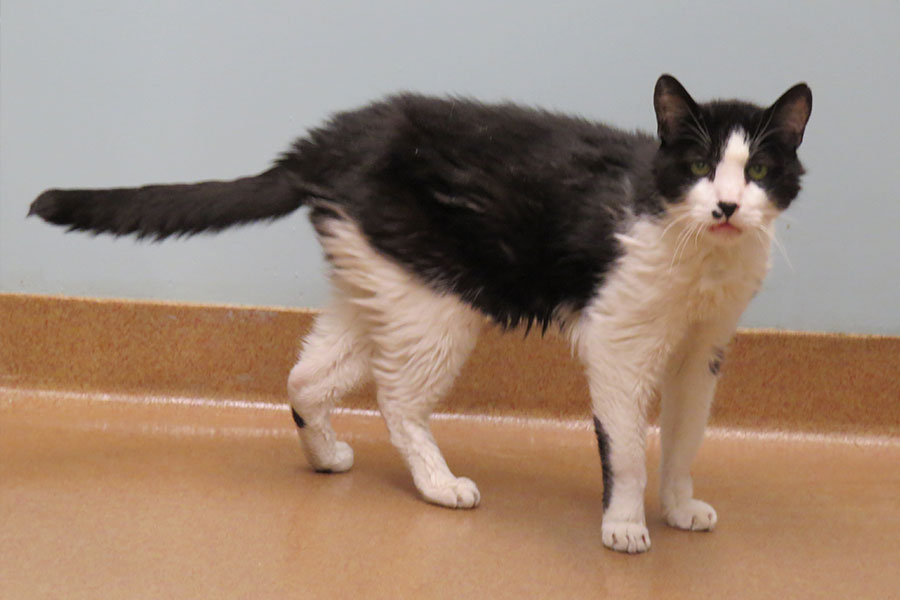Euthanasia: A Compassionate Choice
Every year, animal shelters in the United States receive more than six million animals. Despite the fact that some of these animals are reclaimed or adopted, close to four million unwanted dogs and cats are left with no refuge. Shelters are not equipped to provide lifelong care for all these animals – a situation that would force them to live in cramped, stressful conditions for years while other animals are turned away due to lack of space.
Releasing unwanted animals onto the streets is not a humane alternative. These animals are left to face the risk of starvation, disease, extreme weather, and other cruel realities, such as torment at the hands of humans or capture by those who supply animals to laboratories.
Euthanasia: A Humane Solution
Given the overwhelming number of unwanted companion animals and the scarcity of good homes, the most humane choice sometimes is to provide a peaceful end to their lives. Both The Fuzzy Pet Foundation (TFPF) and the American Veterinary Medical Association agree that euthanasia administered via an intravenous injection of sodium pentobarbital by a trained professional is the most compassionate method for euthanizing animals. The American Humane Association considers this the only acceptable method of euthanasia for cats and dogs in animal shelters.
Other methods, such as injections into the hearts of conscious animals, inhalants, decompression, drowning, electrocution, and shooting, are unacceptable due to their tendency to cause suffering before death. Certain drugs can cause discomfort or induce violent reactions when administered improperly. Similarly, the use of gases such as nitrous oxide, halothane, and carbon monoxide can be unreliable and lead to distress in animals.
Physical methods like shooting, electrocution, and decompression can lead to immense pain and do not guarantee immediate death. Until the overpopulation of dogs and cats is brought under control through spaying and neutering, our responsibility is to prevent the suffering of unwanted animals in the most humane way possible. When performed correctly, euthanasia can be the most compassionate option.
When to Say Goodbye
When pets become critically ill and suffer with no hope of recovery, it may be time to consider euthanasia. Engage in a frank discussion with your veterinarian, and consider a second opinion if you’re uncertain. Ensure that your decision is not based on prolonging your pet’s suffering due to your own fears of letting go.
If your pet is very nervous, consider getting a tranquilizer from your vet to help relax them prior to the procedure. Some veterinarians offer home visits, which can reduce the stress for pets who are in pain or fearful of the vet’s office.
Staying with your pet during the euthanasia procedure can be comforting for them. It’s important to stay calm and provide a soothing voice. Your presence during their last moments can provide a sense of peace and closure.
Grief is a normal response to the loss of your beloved pet. Some hospitals and private grief counseling services offer resources to help individuals cope with the loss of their animal companions. Remember that other pets in your home may also be grieving the loss of their friend, and they will require extra care and attention during this time.
Taking Action
If your local shelter is using any euthanasia method other than an intravenous injection of sodium pentobarbital, we urge you to protest to local authorities and demand the adoption of humane methods. Ensure that your local shelter complies with state and local laws for euthanasia. Euthanasia should always be carried out by trained and caring staff, and never in view of other animals.
References:
1) “HSUS Pet Overpopulation Estimates,” The Humane Society of the United States, last accessed 14 Jan 2016.
2) Bill Baskervill, “Many Abandoned Animals Die in Taxpayer-Funded Gas Chambers,” Associated Press, 17 June 2002.
3) State of Rhode Island General Assembly, State of Rhode Island General Laws Section 4-19-12, 2007.
4) American Veterinary Medical Association, AVMA Guidelines on Euthanasia (formerly, Report of the AVMA Panel on Euthanasia), June 2007.


